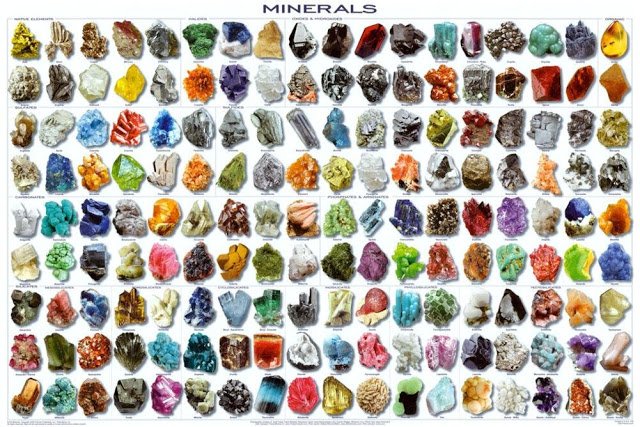Soil forming minerals (Definition, Primary minerals, and Secondary minerals)
Definition of minerals
A mineral is an inorganic substance that occurs in nature with distinct physical and chemical properties. It usually consists of two or more elements in chemical combination in certain definite proportions.
A mineral that forms the original component of a rock is known as a primary mineral, e.g., feldspar, mica etc., while that which has been formed, deposited or introduced as a result of subsequent changes in rocks is known as a secondary mineral. Secondary minerals are limonite, gibbsite etc., and clay minerals like kaolinite, montmorillonite, etc. Those minerals which form the chief constituents of a rock are known as essential minerals while those which occur only in small quantities and not much important, are called accessory minerals, e.g. apatite, pyrites, zircon etc.
A. Primary Minerals
1. Feldspars
Feldspars belong to the group of minerals that are light in weight, and are divided into orthoclase and plagioclase.In orthoclase, potassium is prominent. Plagioclase is divided into albite (high in sodium), anorthite (high in calcium), and oligoclase which consists of both albite and anorthite. Plagioclase weathers more rapidly than orthoclase. Potash feldspars are present in granite and similar other igneous rocks while plagioclase feldspars form important constituents of basic igneous rocks like basalt, gabbro etc. In the soil, feldspars are usually present in the sand and silt fractions.
2. Quartz
It is another mineral which is widespread. It is one of the most resistant minerals. Quartz is the silica minerals. Serpentine, a hydrous magnesium silicate, occurs more commonly as a secondary product.Garnets are characteristic of metamorphic rocks and are very hard and very resistant to weathering. Quartz is an important constituent of all the three classes of rocks and is the dominant mineral in granite, sandstone, rhyolite etc. Among metamorphic rocks, gneiss and quartzite contain appreciable quantities of this mineral. It is present in sand and silt fractions. Even the clay fraction of some soils contains quartz.
3. Micas
Micas occur both as primary minerals in igneous rocks and as secondary minerals in altered products of feldspars and other minerals. The two important types are muscovite (white mica) a potassium aluminium silicate, and biotite (black mica) a potassium, aluminium, magnesium, iron silicate. Biotite weathers more rapidly than muscovite.
4. Hornblende and Actinolite
These are the two important minerals of the amphibole group of silicate, arc also known as ferromagnesium minerals. These minerals contain a number of bases like calcium, magne-sium, iron (ferric), manganese, titanium, sodium, potassium etc. Hornblende is more abundant in acid as well as basic igneous rocks. It is found in soil, especially in sand and silt fractions.
B. Secondary Minerals
Important secondary non-silicate minerals are calcite (CaCO3), magnetite (MgCo3). Dolomite (CaCO3.MgCO3) and gypsum (CaSO4.2H2O) (See Table).
TABLE: Important primary and secondary minerals found in soils
|
Primary minerals
|
Secondary minerals
|
Resistance to weathering
|
|
Quartz
Muscovite
Microctine
Orthoclase
Biotite
Albite
Hornblende
Augitc
Anorthitc
Olivine
|
Geothite (FeOOH)
Hematite (Fe2O3)
Gibbsite (Al203. 3H20)
Clay minerals (Al-silicates)
Dolomite (CaCO3. MgCO3)
Calcite (CaCO3)
Gypsum (CaSO4.2H20)
|
Most resistant
Most resistant
Most resistant
Most resistant
Most resistant
Most resistant
Least resistant
|
Clay minerals are the most important secondary minerals. These have been synthesized from residual products of Weathering, are colloidal in nature. Clay minerals are crystalline in nature and are very important constituents of soils. Most of the physical, chemical and morphological properties of soils are influenced by these clay minerals. Clay minerals are hydrous aluminium silicate, frequently with some replacement of aluminium by iron and magnesium. The three most important groups of clay minerals are kaolinite (non-expanding type with two layers), montmorillonite (expanding type with three layers) and illite.
You might interest more articles about Soil Science
Useful Agricultural Websites
Food and Agricultural Organization
